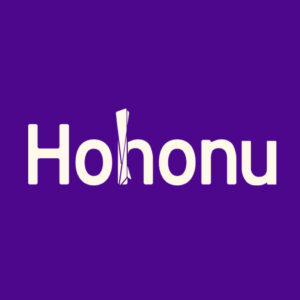Last June I had the privilege of attending a conference put on by INPEACE called “Re-imagining School and Community Partnerships.” I got to participate in a breakout session where educators and community stakeholders tackled the challenge of creating opportunities for “engaged and relevant” student learning. At one point we were told to brainstorm forces for positive change, and our chart paper was soon covered in phrases like:
- ʻāina-based learning
- passionate teachers
- culture-based learning
- environmental resources
- hands-on learning
- traditional knowledge
Tucked into a corner of the list, somewhere amid this outpouring of educational practices for cultural resurgence and empowerment, was the lone word “technology”–something we’d added during a lull in the conversation when someone had ventured to say that kids these days are really into all that technology stuff.
It was an emblematic moment that reinforced a lot of questions I’ve been struggling with as Purple Maiʻa moves forward with planning our pilot year of tech maker education for kids in tech deserts.
My main question has been, how do you launch a tech program in the midst of such a vigorous and fruitful back-to-the-land cultural and educational movement? Is technology instruction relevant to this kind of work?
From the perspective of communities that focus on cultural resurgence, there is a little in technology education movements to be wary of. The rhetoric driving the current coding craze on the U.S. continent draws on both nationalist economic arguments as well as narratives of equality and social justice. The nationalist line of thought focuses on how we need more engineers, mathematicians, and computer scientists to maintain global U.S. dominance in the face of competition. At the same time, the social justice in tech people are concerned with making sure that more women and minorities work for the innovative tech companies that have the power to shape our future.
From the perspective of Hawaiʻi, there’s more to consider.
We are seeing things like the Hawaiian-dominated charter schools movement and a proliferation of other culture- and land-based educational programs, whether they develop from within schools or are spearheaded by groups that are rebuilding loʻi and fishponds, starting community-engaged farms, connecting the arts with cultural identity, or revitalizing voyaging traditions. Programs like these have proven that our young people are happier, healthier, more respectful of the land and each other, and more successful when their learning is hands-on and engaged with land and culture.
At first glance, it seems like sitting in front of a computer coding a game or designing an app is the polar opposite of all of this. Is there even room for technology instruction in the current cultural climate?
Obviously we at Purple Maiʻa think there is.
One of the many lessons to be learned from ʻāina- and culture-based education is that despite all the distractions of the modern world, land continues to be the basis of everything and needs our attention and care.
So anything that takes our attention away from the land–like technology–is bad, right?
Marisa Elena Duarte, puts it well when she says:
“The sensations of immediacy, urgency, and placelessness that accompany heavy use of digital networked systems are also accompanied by sensations of alienation, information overload, and consumerist ideation. Indigenous peoples who observe the ecological devastation of their homelands due to economic wars of the global elite recognize the psychological and philosophical entanglements of a technologically dependent social order.”
In other words, technology can make us feel adrift in space, cut off and alienated from the natural world, and therefore more likely to engage in environmentally and culturally destructive practices.
But what is technology anyway?
That’s a big question, and the answer you get largely depends on who you ask.
In racist notions of hierarchy and difference, technology is associated with the material productions of modern, scientific, Western society. In contrast to this, Hawaiians and other people of color are supposedly pre-modern and cultural, possessing little technological aptitude or scientifically useful knowledge.
This is of course, ridiculous. It’s a false binary that obscures histories of intellectual achievement and technological innovation by Hawaiians and other non-western cultures. It saddles our youth with negative self-perceptions and a belief in their own intellectual inadequacy. It doesn’t help that assimilationist education in dominant knowledge systems has been historically used against Hawaiians and other indigenous peoples as a way to distance children from the knowledges of their own cultures. Under these circumstances, it’s understandable that some might be suspicious of tech education and the values it may impart.
On the other side of the coin, there’s the “authenticity” trap: the idea that if you aren’t careful to avoid contact with “modern” technology, you’re no longer being culturally authentic. This is a vastly limiting idea that can sometimes reinforce the stereotypes outlined above, and serve as an excuse for not taking on the challenge of mastering tech skills.
Is this getting frustrating and confusing? It certainly is for me.
I find it helpful to first recognize that technology is not and has never been a purely Western intellectual pursuit. Just as it’s empowering to reconnect with the complexities of traditional knowledge, it’s also empowering for kids to feel that, despite the stereotypes, they have the intellectual capacity to control and manipulate the most innovative technology in use today.
And second, I keep in mind that our goal is not to use technology to transform our kids, but to transform technology by teaching it to our kids. They can reshape the way technology is produced, distributed, and used by bringing with them the values that are central to Hawaiian culture and the many other cultures of Hawaiʻi.
The possibilities are actually very exciting. One example is the exciting work of ʻŌiwiTV, a Hawaiian media organization that uses modern equipment and technological savvy to do culturally important work like producing media for language learning and documenting Hōkūleʻa’s worldwide voyage.
Can you think of a way that technology could be used to augment (or even revolutionize) a resurgent cultural or environmental project going on in Hawaiʻi now? Let’s have a discussion about it.



